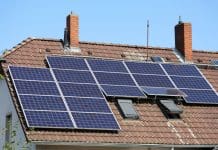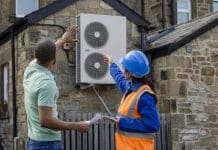John Edwards, Trustee of the IHBC argues for an intelligent and holistic approach to energy assessments that have a positive impact on the sustainability of buildings, the health of occupants, and make buildings more energy efficient…
The Institute of Historic Building Conservation (IHBC) is the professional body for conservation specialists and its members are charged with ‘doing right’ by traditional buildings that use what is often termed ‘pre-1919’ construction. But anyone working on older buildings needs to understand that their traditional construction materials and technologies have particular characteristics that must be accommodated when dealing with energy assessment and related issues around retrofit. And if you don’t know the old technology, you won’t know what should be done.
Indeed, while the Green Deal wasn’t such a good deal after all as most people didn’t take it up, if your building was traditionally built, then it may not have been good for the building either. That’s because it was all based on the installation of ‘measures’ determined by RdSAP (Reduced data SAP). The simplified nature of the RdSAP energy assessment method makes it a relatively easy and quick assessment of energy efficiency, but its simplified nature means that its ability to accurately represent a true assessment is often very flawed. This method may be cheap, but it’s not cost effective if it ends up recommending measures that don’t deliver the predicted pay back, or makes recommendations which have a detrimental impact on the longevity of the building and the health of its occupants.
The Green Deal maybe dead, but RdSAP is still the tool used to determine energy efficiency bands and for making recommendations on how to make buildings more energy efficient. Whilst currently RdSAP is the tool used to classify the energy efficiency of buildings for sale, by April 2018 under the Private Rented Sector Energy Efficiency Regulations, private rented properties will have to reach energy rating Band E, which means installing measures that earn SAP points, but that doesn’t necessarily mean all the things that will make a building more energy efficient will make it more sustainable. In fact, some things may have a detrimental impact on sustainability. Making buildings more energy efficient is vital to reduce carbon and also to reduce the extent of fuel poverty, but there must be a realisation that the installation of energy efficiency measures should not be the first thing to consider, especially when the process of determining them is flawed.
Some measures such as modern boilers, energy efficiency lighting and loft insulation are obviously very sensible things to do, but when it comes to things like wall insulation one has to be very cautious. The removal of cavity wall insulation is now becoming a common activity in some parts of the UK due to dampness problems. This measure is recommended under RdSAP even when the building regulations indicate that it shouldn’t be installed due to wind and rain with reference to exposure zone ratings. This should also be a lesson for those considering solid wall insulation, where there are even greater risks.
All this should point towards doing things that we do understand — to be sensible and that will have a positive impact on the sustainability of buildings and the health of occupants as well as helping to make them more energy efficient. This is about keeping buildings in good repair using appropriate methods and materials. This is supported in BS 7913: 2013: Guide to the Conservation of Historic Buildings, which is applicable to all traditional buildings. Here it indicates that walls can be 30% less energy efficient if damp, which highlights that keeping walls in good repair will not only sustain their longevity and protect vulnerable materials such as embedded timber from rotting, but also provides greater energy efficiency. The same Standard also indicates that impervious materials can be harmful to traditional buildings. Such materials would include cement mortar pointing and rendering, but also includes most types of solid wall insulation. The Standard indicates that removal should be considered.
Making traditional buildings energy efficient requires a balance of good and appropriate repair and maintenance with well-informed retrofit. This is promoted in BS 7913, and the National Construction College have built upon this with the development of a 2 day course that takes the holistic approach, but also provides the detail on how to understand traditional buildings – what they need and how to implement both retrofit and other works that make buildings more energy efficient and sustainable. Details can be found at the Environment Study Centre website.
However, more needs to be done to improve knowledge and understanding. RdSAP may be with us for the foreseeable future, but those that are using it and developing recommendations based on it should also refer to BS 7913 to ensure that their recommendations are sensible. This should also be the case for anything that replaces the Green Deal. ■
. . . . . . . . . . . . . . . . . . . . . . . . . . . . . . . . . . . . . . . . . . . . . . .
John Edwards, MA, DipBldgCons, CEnv,BCAS, FCIOB, FRICS, IHBC
Trustee of the IHBC and Director of Edwards Hart Consultants
Tel: 01747 873133
Wales@ihbc.org.uk













